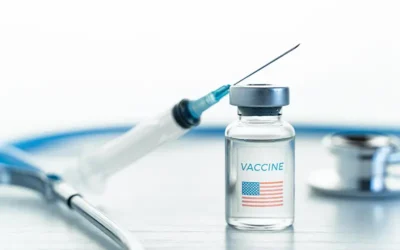In November 2017, the Centers for Medicare & Medicaid Services released two final rules that would affect payment for physician services. The Medicare Physician Fee Schedule (PFS) Final Rule was published on November 2 and our medical billing company had reported its impact on orthopedic ASCs and therapy-related services. CMS also released the final Quality Payment Program (QPP) rule under which providers participating in MACRA are paid based on the quality of care they provide through either the Merit-based Incentive Payment System (MIPS) or Advanced Alternative Payment Models (APMs). Let’s look at the implications of the 2018 payment update for anesthesia providers as discussed in an Anesthesia News article.
The major changes for anesthesia are as follows:
- Addition of five codes for anesthesia for gastro-endoscopic procedures and deletion of three low-volume codes
- Reimbursement for implantation of neurostimulators and the conversion factor has increased
- Payments for colonoscopies and line placement has been reduced
Here are the details:
- Five new codes: The anesthesia endoscopy codes were identified as misvalued and a new set of CPT codes have been created to report anesthesia for endoscopies. Anesthesia practices that report codes 00740 (Anesthesia for upper gastrointestinal endoscopic procedures, endoscope introduced proximal to duodenum) or 00810 (Anesthesia for lower intestinal endoscopic procedures, endoscope introduced distal to duodenum) will use more detailed codes in 2018:
- 5 units – 00731 (Anesthesia for upper gastrointestinal endoscopic procedures, endoscope introduced proximal to duodenum; not otherwise specified)
- 6 units – 00732 (endoscopic retrograde cholangiopancreatography [ERCP])
- 4 units – 00811 (Anesthesia for lower intestinal endoscopic procedures, endoscope introduced distal to duodenum; not otherwise specified)
- 3 units – 00812 (screening colonoscopy)
- 5 units – 00813 (Anesthesia for combined upper and lower gastrointestinal endoscopic procedures, endoscope introduced both proximal to and distal to the duodenum)
ERCP now has 6 base units versus 5 previously. On the other hand, reimbursement for screening colonoscopies has been reduced to 3 base units (compared to 5 previously), while other colonoscopies will have 4 base units.
- Three codes deleted: Anesthesia service codes for extrapelvic (01180) and intrapelvic (01190) obdurator neurectomy and shoulder cast application, removal or repair; shoulder spica (01682) will be deleted due to the low volume of these procedures.
- Increase in National Anesthesia Conversion Factor: Starting January 1, 2018, the national anesthesia conversion factor increased to $22.1887 (an increase of $0.1443 from $22.0454 in 2017).
- Changes for line placement: New work values have been assigned for CPT codes for line placement which were identified as potentially misvalued. CPT code 36556 was identified as part of a screen involving high expenditure services with Medicare allowed charges of $10 million or more that had not been recently reviewed. The Insertion of Catheter set was expanded to include CPT codes 36555, 36620, and 93503.
- 1.93 RVUs – 36555 insertion of non-tunneled centrally inserted central venous catheter; younger than 5 years of age
- 1.75 RVUs – 36556 Insertion of non-tunneled centrally inserted central venous catheter; age 5 years or older
- 1.00 RVUs – 36620 Arterial catheterization or cannulation for sampling, monitoring or transfusion (separate procedure); percutaneous
- 2 RVUs – 93503 Insertion and placement of flow directed catheter (eg, Swan-Ganz) for monitoring purposes
The value lines in the RVG of the American Society of Anesthetists are now listed as “I.C.,” for internal consideration, implying that groups will need to negotiate a rate of reimbursement with commercial carriers.
- Percutaneous Implantation Of Neurostimulator Arrays: The work valuation for percutaneous implantation of neurostimulator arrays has increased in 2018. CPT codes 64453 (percutaneous implantation of neurostimulator electrode array; cranial nerve) and 64555 (percutaneous implantation of neurostimulator electrode array; peripheral nerve) have been revalued upward around 25%.
- Changes to Value-Based Modifier: The Value Modifier (VM) applies to payments under the Medicare Physician Fee Schedule (PFS) for physicians, physician assistants, nurse practitioners, clinical nurse specialists, and certified registered nurse anesthetists who are solo practitioners and physicians, physician assistants, nurse practitioners, clinical nurse specialists, and certified registered nurse anesthetists in groups with 2 or more eligible professionals (EPs) based on performance in CY 2016. CY 2018 will be based on 2016 performance and is the final year of the VM. The changes to VM are as follows:
- An upward or downward adjustment will be made to providers’ reimbursement based on how well they performed in 2016
- Providers participating in MIPS need to report only 6 quality measures in 2016, versus the original requirement of 9
- The requirement for a cross-cutting measure has been waived
- Physicians who successfully submit data will avoid a downward adjustment under the VM
- Penalties for groups that did not participate in the PQRS have been reduced from 4% to 2% (for a group of nine or less, the penalty has been reduced from 2% to 1%).
- Increase in data completeness threshold: While previously, physicians had to submit quality data on 50% of eligible patients for a particular measure, the 2018 PFS has raised this proportion to 60%. Moreover, in 2018, clinicians need to submit multiple measures and should participate in the improvement activities category to avoid a penalty. The final scoring threshold has been set at 15 points, and providers must score at or above this thresh bold to avoid a penalty.
- Cost: Practices that are attributed patients will be held accountable for costs. Most anesthesia providers will not be attributed patients, but those that are should know that CMS will be looking at two cost measures – total costs per capita and Medicare spending per beneficiary. Anesthesiologists will have greater exposure in the cost category in the future when CMS includes costs related to episodes of care such as surgeries.
- Exemption for Extreme and Uncontrollable Circumstances: CMS recognizes that public health emergencies and natural disasters, including the recent hurricanes, have impeded many physicians’ participation in the QPP. Clinicians in affected areas are eligible for an automatic exemption.
It is obvious that anesthetists and physicians in general, need to focus on effective quality data capturing and reporting early in the year. Partnering with an efficient medical billing and coding company is a feasible option for providers to improve efficiency and optimize reimbursement in the dynamic healthcare landscape.




